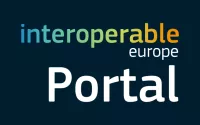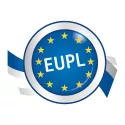
EBSI status
The European Blockchain Services Infrastructure (EBSI) aims to leverage the power of blockchain for the public good. Indeed, in the current age of Internet (Web2), big platforms and social networks (i.e. the so-called “GAFAM”) offered to facilitate users’ activities by providing them services like unique sign-on (i.e. “Sign in with Google”). However, by providing such service, they have taken global visibility and control on users’ behaviour and credentials. In the coming third age of the internet (Web3), the aim of EBSI is to provide a new paradigm for exchanging and verifying information by putting users back in control of their data, while creating a framework for trust that is privacy preserving, based on European nodes and doesn't rely anymore on big platforms or strong central government.
The project was born in 2018 when all EU Member States, Norway, Liechtenstein and the European Commission joined forces to create the European Blockchain Partnership (EBP). As from 2020 it produced a Proof of Concept developed by DG DIGIT. At the beginning of 2021, the “Early Adopters”, 21 projects from 18 European countries, participated in a first pilot programme where private and public sector partners were given access to the pre-production environment of EBSI and were invited to develop and make interoperable their own pilot projects.
The final step of the Early Adopters programme was a showcase of the outcomes in the demo day organised in June 2022 and as from now March/April 2023, EBSI should start effective implementations by opening in Brussels a dedicated space the EBSI Experience Centre, and providing verifiable credentials framework in first domains like education (certification of university diplomas) and social security, with the European Social Security Pass credentials.
Blockchain based
Blockchain technology is notorious for being almost impossible to tamper with, in the sense that its decentralised ledger is updated by all authorised nodes based on consensus. The copies of the ledger, with information on all previous transactions, are stored in many places at once, which makes it much harder to tamper with the data, avoids the existence of a single point of failure and makes the system more resistant to cyberattacks.
The EBSI blockchain network is specific in several key ways:
- It is permissioned, meaning that not anyone can operate an EBSI node, and not anyone can write information on it. This prevents EBSI being used for illegal purposes.
- It is sovereign and EU-based, which means that all EBSI nodes are based in Europe, and EBSI complies with European values and regulations, such as GDPR.
- Because fewer authorized actors are involved, EBSI is energy-efficient. It uses a consensus method based on Proof of Authority, which requires almost no computing power and which, unlike unlimited public mining across the world, consumes little energy.
Use and transparency
Like citizens, both industry and public sector will benefit from using EBSI in their business processes, for which the major use case families and domains are currently implemented.
Source code transparency and permanent open source availability is granted by the use of the European Union Public Licence (EUPL-1.2).
More information on the EBSI site
Referenced solution

Shared on






